Lifestyle
Why do people compare Fisker to Tesla?
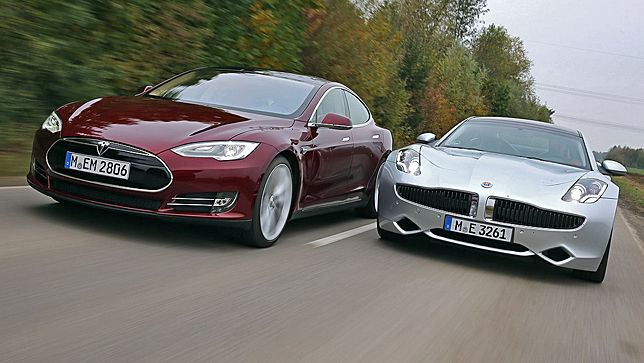
On my way back from a great Memorial Day weekend trip to Mystic, CT for some “lobstah”, we played tag with a Fisker Karma with NY plates. We got to see the front, back and sides of the car in all it’s glory, and I must say it’s a pretty smart looking car aside from the plain backside. I knew that Fisker had gone bankrupt and the defunct battery startup A123 which supplies batteries to the car had been bought by a Chinese billionaire, but other than that I didn’t know much about the car or the company. So, while driving back my wife started started googling and reading the information to me. 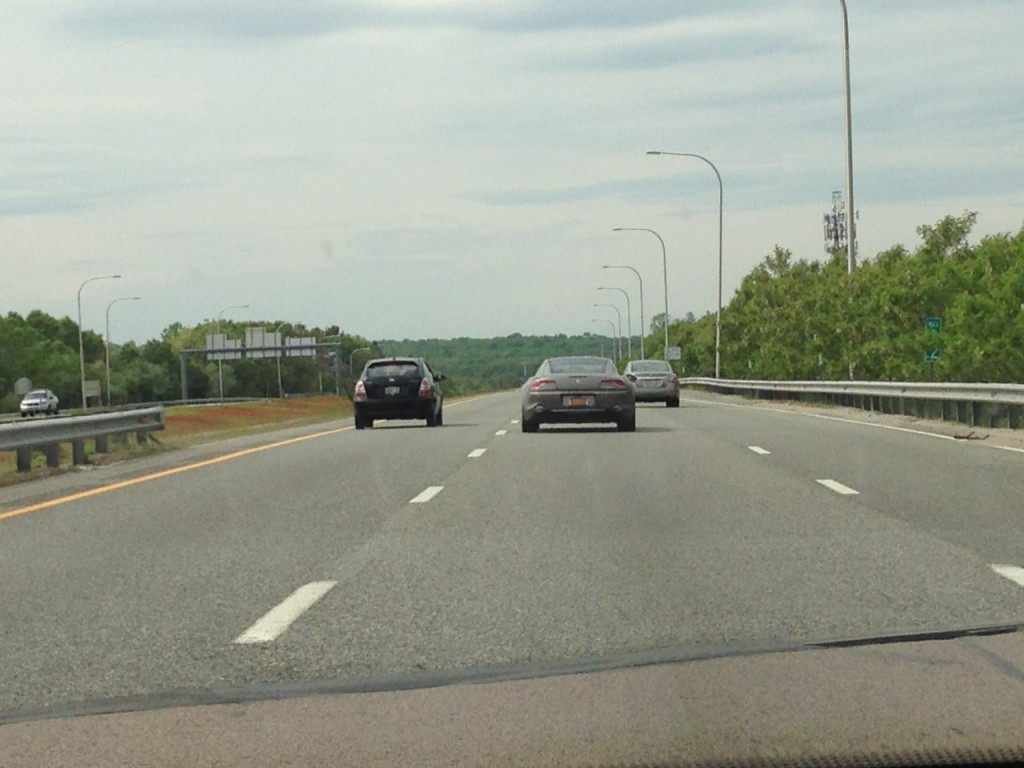
The Fisker
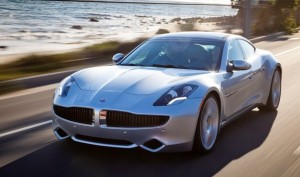 The first question we had while peering at the car through our peripheral visions was how the Fisker driver managed to make its way up here from NY? The answer is that while wikipedia calls the Fisker Karma an electric vehicle, it’s really a hybrid. There’s a whole area of research and writing on hybrids that I won’t get into. The interesting part is around terminology. If you run only on electric and use gas to power an electric generator, then how can you get by calling the vehicle an EV when you’re burning gas most of the time. Who are they fooling?
The first question we had while peering at the car through our peripheral visions was how the Fisker driver managed to make its way up here from NY? The answer is that while wikipedia calls the Fisker Karma an electric vehicle, it’s really a hybrid. There’s a whole area of research and writing on hybrids that I won’t get into. The interesting part is around terminology. If you run only on electric and use gas to power an electric generator, then how can you get by calling the vehicle an EV when you’re burning gas most of the time. Who are they fooling?
Sometimes EVs are actually hybrids.
There are two “fill” ports on the Fisker, one for electric and one for gas which we saw on both sides of the car. With gas the Karma gets about 20 MPG, and with electric the EPA rates it at a relatively-low 52 MPGe. The electric range according to the EPA is a paltry 32 miles (the Model S EPA rating is almost 10x that at 300 miles). Also, unless you’re a a bit nuts you can’t achieve EPA ranges which require driving on perfectly flat roads at 55 MPH. With these kinds of specs I’d call the Fisker “barely electric”. When you combine both the gas and electric range of the car the full range was 230 miles. So even though you’re burning gas you’re going to have to stop every 100 miles or so to fill up. The Karma is neither a very efficient gas car, nor a particularly good “EV”. What ultimately turned me off from purchasing a hybrid is the fact that the cargo/interior room is compromised by having to support two power systems. On the Fisker this was so pronounced that it got rated as a subcompact by the EPA. The Fisker’s interior was modern and different but more alone the lines of an evolution rather than a radical departure of technological advances and innovation like the Model S.
ASLO SEE: Is Tesla Motors disruptive or disturbing?
The Fisker had a solar panel on its roof which they claimed could gain up to 4-5 miles of extra range a week (if it was really sunny, all the time). Of course they gave up things like a panoramic sunroof for that benefit and the Tesla forums are full of people doing math showing that adding solar to the roof of a car just doesn’t make sense given the small return you can get. But, when you only have 32 miles of EV range, 4-5 extra miles is a huge percentage improvement.
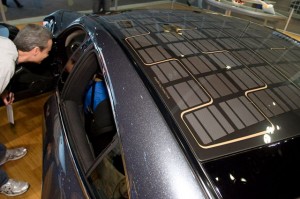 I think the solar roof was really just a sales gimmick to make people think the car was green.
I think the solar roof was really just a sales gimmick to make people think the car was green.
The Fisker had a sound generator that triggered automatically at speeds less than 25 MPH when running in pure EV mode to warn pedestrians of its approach. There are times in the Model S where it would be great to have some button you could trigger to make an obvious-but-not-rude sound. I’ve already been stranded behind slowly walking pedestrians that didn’t know I was following them in my Model S with the only option being a rude horn. Reports say the Fisker Karma can go from 0-60 in 5.9 seconds putting it in the same performance category as the Tesla Model S 60 and slower than the 85 and P85 versions. The Karma was also expensive with a starting price around $102K and going up to $116K, putting it in the class of the Porsche Panamera and the Tesla Model S.
Fisker The Company
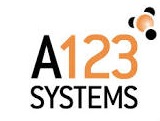 Fisker, like Tesla, was a high tech startup company, but unlike Tesla, they chose to use another startup’s battery technology to power the vehicle instead of going with a dominant brand in battery technology.
Fisker, like Tesla, was a high tech startup company, but unlike Tesla, they chose to use another startup’s battery technology to power the vehicle instead of going with a dominant brand in battery technology.
MUST SEE: Panasonic and Tesla Reach Agreement to Expand Supply of Automotive-Grade Battery Cells
Tesla chose to put 7,000+ time-proven Panasonic batteries in their Model S and upcoming Model X. I’m a big believer in startup companies that innovate and don’t bet their success on the success of another startup. That rarely ever works out well. It should be mentioned that early in the life of Tesla Motors the founder of Fisker actually worked for Tesla and later split off to start Fisker Automative amid lawsuits and controversy. Both Fisker and Tesla took green-energy loans from the government. Fisker borrowed $529M and never paid it back. Tesla borrowed $465M and repaid it in full and ahead of schedule. Fisker started shipping cars to customers in 2011 and got to just south of 2,500 cars before going out of business in 2013. During that time they were plagued with battery problems, reports of car fires and other issues. Tesla has shipped over 40,000 cars so far, admittedly not without their own exciting events along the way. Both Fisker and A123 have been purchased by a Chinese billionaire who hopes to revive the two companies, but given all the compromises above it seems unlikely that it will go well, but alas, there’s no stock to short there.
Tesla and Fisker Similarities?
The Tesla Model S and the Fisker Karma were both built by high tech startups in California but the companies took very different paths to producing green vehicles. Fisker focussed on design with an award-winning exterior but joined it with a mediocre powertrain configuration plagued by supplier and design issues. Tesla focussed on the engineering aspects of the car, using proven technology and making it better while still holding to a clean exterior design. The Fisker Karma is overly complex. It’s also slower and more expensive than the Model S. It has less range than the Model S, even with a gas-powered generator onboard. It is full of compromises like interior space and is not surprisingly no longer produced. It does however have a noise maker and better cup holders.
Summary
As Toyota has proven, hybrid vehicles can be tremendously successful if done right. The challenge is understanding the mission and staying true to that mission. Toyota set out to improve MPG for the masses by using hybrid technology in reaction to rising gas prices. Fisker set out to make a great looking car and only really thought cleanly on aesthetics but made a lot of compromises in execution. Tesla set out to make a true electric vehicle with no compromises and they are accomplishing that mission. Tesla has yet to reach the mass-market level of their aspirations but they are well on their way and already have a true electric vehicle that makes no compromises. For what it’s worth we made the 150 mile round trip to Mystic, CT with 100 miles of range left at the end. While we passed the only Supercharger nearby on the way down and back in Rhode Island, there was no reason to stop and it’s a lot more convenient to charge at home. I’ve made no compromises with my Model S.

Lifestyle
Tesla Model S Plaid battles China’s 1500 hp monster Nurburgring monster, with surprising results
There is just something about Tesla’s tuning and refinement that makes raw specs seem not as game-changing.

The Tesla Model S Plaid has been around for some time. Today, it is no longer the world’s quickest four-door electric sedan, nor is it the most powerful. As per a recent video from motoring YouTube channel Carwow, however, it seems like the Model S Plaid is still more than a match for some of its newer and more powerful rivals.
The monster from China
The Xiaomi SU7 Ultra is nothing short of a monster. Just like the Model S Plaid, it features three motors. It also has 1,548 hp and 1,770 Nm of torque. It’s All Wheel Drive and weighs a hefty 2,360 kg. The vehicle, which costs just about the equivalent of £55,000, has been recorded setting an insane 7:04.957 at the Nurburgring, surpassing the previous record held by the Porsche Taycan Turbo GT.
For all intents and purposes, the Model S Plaid looked outgunned in Carwow’s test. The Model S Plaid is no slouch with its three motors that produce 1,020 hp and 1,420 Nm of torque. It’s also a bit lighter at 2,190 kg despite its larger size. However, as the Carwow host pointed out, the Model S Plaid holds a 7:25.231 record in the Nurburgring. Compared to the Xiaomi SU7 Ultra’s record, the Model S Plaid’s lap time is notably slower.
Real-world tests
As could be seen in Carwow’s drag races, however, Tesla’s tech wizardry with the Model S Plaid is still hard to beat. The two vehicles competed in nine races, and the older Model S Plaid actually beat its newer, more powerful counterpart from China several times. At one point in the race, the Xiaomi SU7 Ultra hit its power limit due to its battery’s temperature, but the Model S Plaid was still going strong.
The Model S Plaid was first teased five years ago, in September 2020 during Tesla’s Battery Day. Since then, cars like the Lucid Air Sapphire and the Xiaomi SU7 Ultra have been released, surpassing its specs. But just like the Model Y ended up being the better all-rounder compared to the BYD Sealion 7 and the MG IM6, there is just something about Tesla’s tuning and refinement that makes raw specs seem not as game-changing.
Check out Carwow’s Model S Plaid vs Xiaomi SU7 drag race video below.
Lifestyle
500-mile test proves why Tesla Model Y still humiliates rivals in Europe
On paper, the BYD Sealion 7 and MG IM6 promised standout capabilities against the Model Y.

BYD is seeing a lot of momentum in Europe, so much so that mainstream media has taken every opportunity to argue that the Chinese automaker has beaten Tesla in the region. But while BYD sales this year in Europe are rising and Tesla’s registrations remain challenged, the raw capabilities of vehicles like the Model Y are difficult to deny.
This was highlighted in a 500-mile challenge by What Car? magazine, which showed that the new Tesla Model Y is more efficient, cheaper to run, and more reliable than rivals like the BYD Sealion 7, and even the nearly 400 KW-charging MG IM6.
Range and charging promises
On paper, the BYD Sealion 7 and MG IM6 promised standout capabilities against the Model Y. The Sealion 7 had more estimated range and the IM6 promised significantly faster charging. When faced with real-world conditions, however, it was still the Model Y that proved superior.
During the 500-mile test, the BYD nearly failed to reach a charging stop, arriving with less range than its display projected, as noted in a CarUp report. MG fared better, but its charging speeds never reached its promised nearly-400 kW charging speed. Tesla’s Model Y, by comparison, managed energy calculations precisely and arrived at each stop without issue.
Tesla leads in areas that matter
Charging times from 25% to 80% showed that the MG was the fastest at 17 minutes, while Tesla and BYD were close at 28 and 29 minutes, respectively. Overall efficiency and cost told a different story, however. The Model Y consumed 19.4 kWh per 100 km, compared to 22.2 for MG and 23.9 for BYD. Over the full trip, Tesla’s charging costs totaled just £82 thanks to its supercharger network, far below BYD’s £130 and MG’s £119.
What Car? Magazine’s testers concluded that despite BYD’s rapid sales growth and the MG IM6’s seriously impressive charging speeds, Tesla remains the more compelling real-world choice. The Model Y just offers stability, efficiency, and a proven charging infrastructure through its Supercharging network. And as per the magazine’s hosts, the Model Y is even the cheapest car to own among the three that were tested.
Watch What Car? Magazine’s 500-mile test in the video below.
Lifestyle
Tesla Cybertruck slapped with world’s least intimidating ticket, and it’s pure cringe
One cannot help but cringe and feel second-hand embarrassment at the idea of a person just driving around with a stack of these babies.

A Cybertruck parked at Stanford Shopping Center in California was recently hit with what might be the most try-hard piece of paper ever slipped under a wiper blade: a “fake citation” accusing the driver of supporting a “fascist car.”
The note, shared on X by Tesla staff program manager Ryan Torres, quickly made the rounds on X, where it quickly gained attention as an example of how not to protest.
The world’s least intimidating ticket
According to the citation, the supposed “violation” was “driving a fascist car.” The remedial action? Take the bus, call an Uber, or ride a bike. The note also dubbed Elon Musk a “chainsaw-wielding Nazi billionaire.” Now, protests against Tesla and Elon Musk have become commonplace this year, but one cannot help but cringe and feel second-hand embarrassment at the idea of a person just driving around with a stack of fake anti-Tesla/Musk citations.
Torres pointed out the irony himself in his post on X. Tesla currently employs over 140,000 Americans, and SpaceX has put the U.S. firmly back at the top of space technology. As Torres put it, maybe the person behind the world’s least intimidating ticket should “read a book on innovation before vandalizing” other people’s property.
Peak performative clownery
Not to mention that the fake ticket’s logic collapses under its own weight. EVs like the Cybertruck are literally designed to reduce emissions, not “destroy the economy.” If anything, Tesla has bolstered the United States’ economy by fueling jobs in engineering, manufacturing, and clean energy. It’s not the first time a Tesla has been the target of vandalism or politically charged notes, but this one stands out for sheer cringe value.
Torres summed it up neatly: “Peak clownery.” On that point, at least, the citation earns full marks. In a way, though, perhaps cringe fake tickets are not as bad as the literal firebombs that were being thrown at Tesla stores and cars earlier this year because some critics were gleefully misinformed about Elon Musk.








